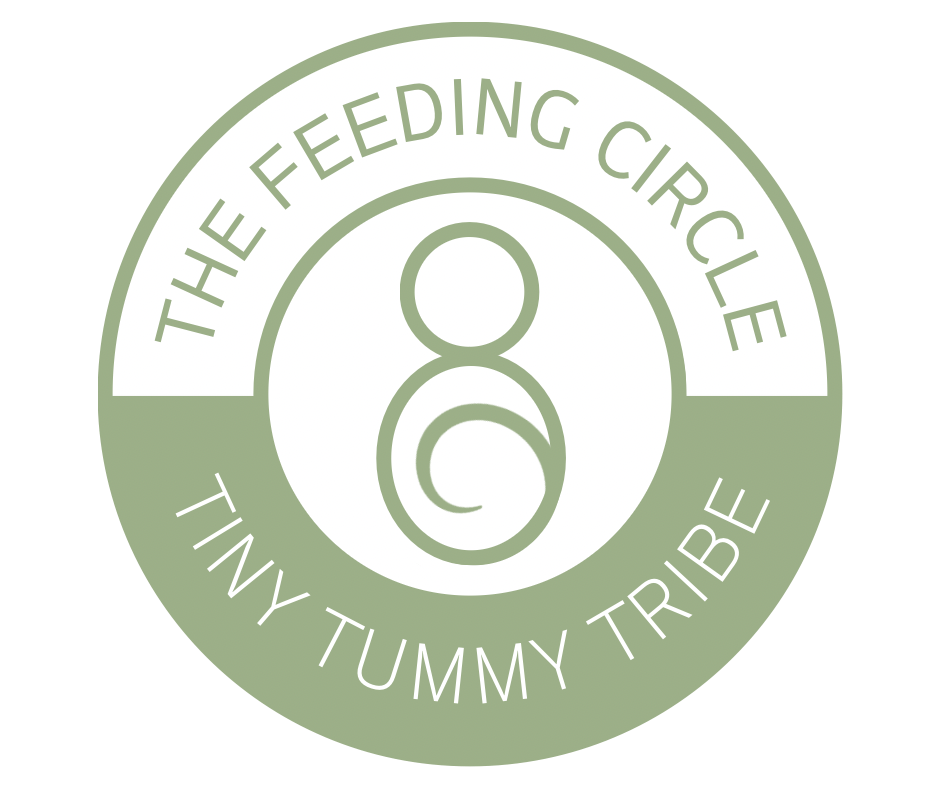Seeing Isn’t Believing: The Functional Approach to Tongue and Lip Ties
At The Feeding Circle, we believe feeding your baby should be rooted in comfort, connection, and confidence. But what happens when feeding feels harder than expected, even when you're "doing everything right"? One often-overlooked cause of feeding struggles is tethered oral tissues—also known as TOTs.

What Are TOTs?
Tethered oral tissues (TOTs)refer to tight or restrictive oral connections like tongue ties, lip ties, or buccal (cheek) ties. These ties may limit movement, but it's not just how they look—it's how they function that matters most.
TOTs can impact:
- Breast/chest feeding or bottle feeding
- Milk transfer and latch quality
- Sucking, swallowing, and breathing
- Transitioning to solids
- Sleep and speech development
TOTs Are Often Missed. Many medical providers aren't fully trained to assess the functional aspect of oral ties. A quick look under the tongue during a newborn exam is not enough to catch them. That's why a full functional feeding evaluation with a trained provider (like our IBCLC team at The Feeding Circle) is so important.
Signs Of Oral Tethering
Checking some of these boxes does not mean your baby has a tongue tie. Putting these symptoms together with a physical assessment are the key to identifying TOTs.
For the Baby: Signs of Possible Tongue, Lip, or Buccal Ties
Feeding Difficulties
- Poor or shallow latch
- Clicking, smacking sounds while nursing or bottle feeding
- Fussiness during feeds
- Prolonged feedings that don’t satisfy baby
- Choking, gagging, or coughing during feeds
- Excessive air intake, frequent burping or discomfort from gas (colic)
- Reflux-like symptoms (arching, spitting up, discomfort)
Growth & Output
- Decreased wet and dirty diaper counts
- Poor weight gain or slow growth
- Frequent feeds with minimal weight progress
- Falling asleep quickly at the breast or bottle, then waking hungry
Oral Function
- Bowl shaped, Heart-shaped, notched tongue tip
- Tension in the jaw or facial muscles
- Tight or restricted lip or cheek movement
- Preference for bottle over breast
Body Tension & Behavior
- Stiff body posture, clenched fists
- Colic-like behavior or persistent crying
- Tension of neck/shoulders/body
- Frequent hiccups
Other Signs
- Milk leaking from mouth during feeds
- Blistered lips
- High palate
- Mouth always open at rest
- Breathing noisily at rest or during feeds
For the Feeding Parent: Signs That May Indicate TOTs
- Painful nursing despite good positioning
- Cracked, bleeding, or damaged nipples
- Lipstick-shaped, compressed or blanched nipples after feeding
- Frequent recurring clogged ducts, mastitis or engorgement
- Oversupply or undersupply issues
- Pumping is easier than nursing
- Feeds feel exhausting or emotionally draining
- Feeling like feeding is never smooth or settled
Understanding Tongue-Tie Classification vs. Severity
When we talk about tongue-tie classification, we’re talking about location—not severity.
Classification systems, such as Coryllos or Kotlow, describe where the frenulum inserts on the underside of the tongue:
- Class 1 / Type I – Inserts right at the tip of the tongue
- Class 2 / Type II – Inserts just behind the tip
- Class 3 / Type III – Inserts farther back toward the mid-tongue
- Class 4 / Type IV – Inserts deep toward the base of the tongue, sometimes hidden under the mucosa (posterior tie)
This location information is useful for describing what’s seen (or felt), but it does not tell us how tight, restrictive, or impactful the tie is.
So how is severity actually determined? Function. Mobility. Symptoms.
At The Feeding Circle, we look beyond appearances and consider:
- How well the tongue can lift, extend, cup, and move side-to-side
- The baby’s ability to latch, feed, swallow, and handle milk flow
- Any signs of fatigue, clicking, leaking milk, or prolonged feeding sessions
- Impact on the lactating parent (pain, nipple damage, low milk transfer, etc.)
You can have a Class 2 tie that causes no feeding problems at all… and a Class 4 tie that severely restricts tongue movement. TOTs aren’t always the sole cause of feeding issues—but when present, they often contribute to a bigger puzzle.
Our Team-Based Approach
Feeding is a whole-body experience. If oral tissues are tight, we may also see body tension, poor posture, or compensatory habits that need support.
We collaborate with: Pediatric bodyworkers (CST, OT, PT) and Airway-aware TOTs-trained release providers (dentists, surgeons)
Bodywork before a frenectomy (tongue- or lip-tie release) is important because it helps prepare the baby’s body for the best possible outcome after the procedure.
Here’s why:
1. Addresses Tension and Compensations
Babies with tethered oral tissues often adapt by using other muscles to feed, breathe, and swallow. This can lead to:
- Tightness in the jaw, neck, shoulders, or back
- Preference for turning the head one way
- Shallow latch patterns or clamping with the gums
Bodywork (like craniosacral therapy, pediatric chiropractic, or infant physical therapy or occupational therapy) helps release these compensations so the baby can move their tongue and jaw more freely.
2. Improves Oral Function Before Surgery
If a baby’s muscles and fascia are already stiff, simply cutting the frenulum may not automatically give them full range of motion.
Pre-release bodywork:
- Increases tongue mobility
- Improves the ability to lift, cup, and extend the tongue
- Helps balance jaw movement for an efficient latch
Think of it like stretching before a workout — you get better movement when the tissues are already flexible.
3. Supports Nervous System Regulation
Feeding isn’t just mechanical — it’s also neurological. Gentle bodywork helps:
- Calm an overactive startle reflex
- Improve coordination of sucking, swallowing, and breathing
- Reduce stress and discomfort during feeds
A more regulated baby will often tolerate the frenectomy procedure better and transition more smoothly afterward.
4. Makes Post-Frenectomy Therapy Easier
After a release, babies need oral exercises and stretches to keep the tissue from reattaching. If the muscles are already more relaxed and mobile, these exercises:
- Cause less discomfort
- Are more effective at maintaining new range of motion
- Help feeding improvements show up faster
5. Sets the Stage for Lasting Feeding Success
By addressing tension patterns and oral dysfunction before the release, you help ensure the baby doesn’t just gain the possibility of better movement, but actually uses it effectively for:
- Better latch and milk transfer
- Reduced gas, reflux, and swallowing air
- Less nipple pain and trauma for the lactating parent
Our goal at The Feeding Circle is to ensure any recommended oral release procedure is:
- Functionally necessary
- Done with Pre Frenectomy body work for optimal outcomes
- Proper aftercare and follow-ups
- Part of a whole-body support plan
What You Can Do
If feeding feels frustrating or painful—or just doesn’t seem right—trust your instincts.
Here’s how to take the next step:
- Start with a functional feeding evaluation from a TOTs-informed provider. Look at function, not just appearance.
- Support your baby’s body and mouth through gentle oral exercises or bodywork.
- Explore treatment options; if needed -- but NEVER feel pressured into a release without support and without prior body work.
You're Not Alone
Many families feel overwhelmed when first learning about TOTs. But with the right support, babies can go on to feed beautifully—at the breast, chest, or bottle.
At The Feeding Circle, we’re here to guide, educate, and support your journey every step of the way.
Reach out to us today to schedule a feeding evaluation or learn more about TOTs-informed care.


